Recent Articles
Popular Makes
Body Types
2021 Chrysler Pacifica vs. 2021 Toyota Sienna
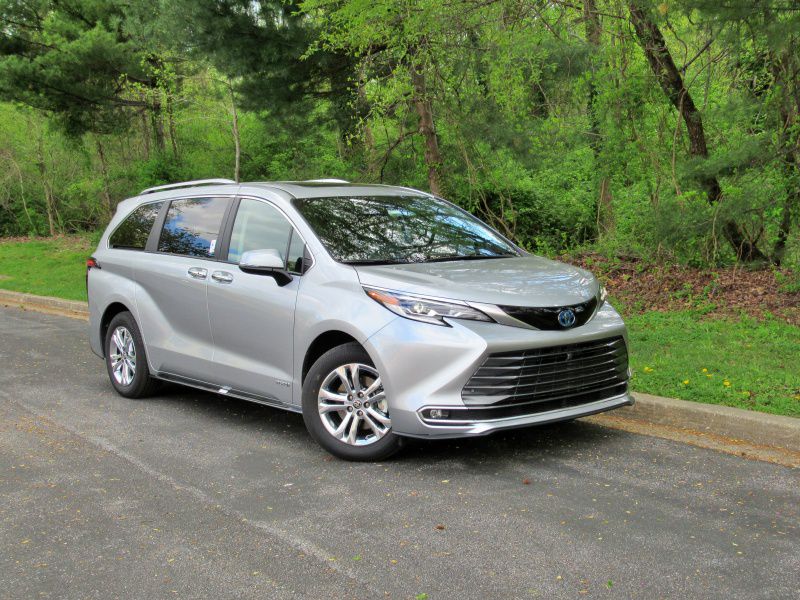
2021 Toyota Sienna Platinum ・ Photo by Brady Holt
The minivan market hasn’t been kind to models that break tradition. The mold is a big rounded-off box with sliding doors, a quiet ride — and a V6 engine. But this year, one of America’s most popular minivans took a big gamble. The redesigned 2021 Toyota Sienna ditched its V6 in favor of a four-cylinder gas-electric hybrid powertrain.
To see how this new approach compares against another minivan class leader, we tested the hybrid Sienna and the V6-powered 2021 Chrysler Pacifica, which is itself newly updated this year. Keep reading to learn how the two vans compare in eight ways, and which one comes out on top.
Pricing and Features
If you were thinking that a hybrid sounds expensive, you’re not entirely wrong. The Sienna’s base price jumped from $31,640 in 2020 to $34,640 this year. That’s also a couple thousand dollars higher than several other leading minivans — though not the Pacifica, which starts at $35,495. Toyota also includes two years or 25,000 miles of free scheduled maintenance.
That said, we’re still going to award this category to Chrysler. First, while both vans are similarly (and generously) equipped in their base forms, it often costs less to add features to the Pacifica. For example, leather upholstery comes at $38,495, while the Sienna doesn’t even have imitation leatherette until $39,750. Secondly, while both vans are packed with high-tech safety gear and offer neat tricks like motion-activated sliding doors — my 2-year-old’s favorite feature — and built-in vacuum cleaners, the Pacifica goes even crazier. Its exclusive options include Chrysler-branded throw pillows (her second-favorite feature) and an in-vehicle camera system (perfect for spying on her rear-facing car seat). Lastly, we’ve seen Chrysler offer bigger discounts off the sticker price than Toyota.
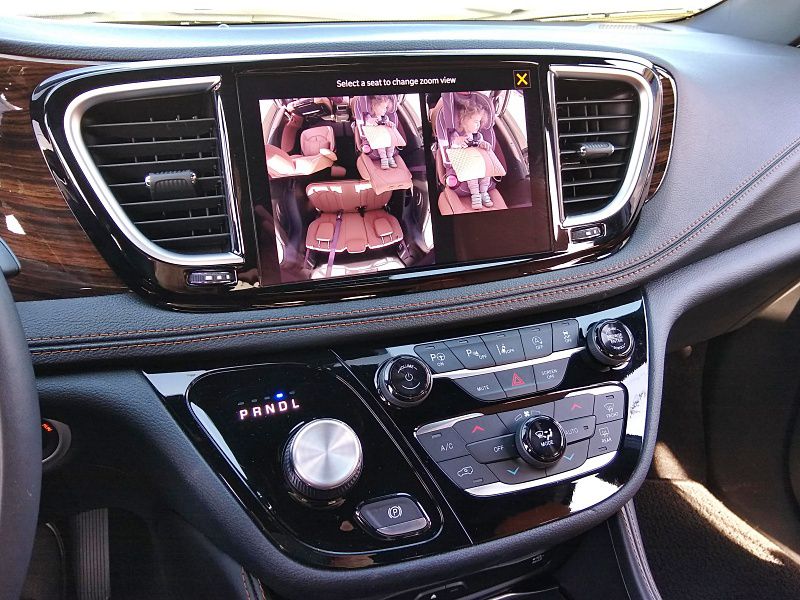
Photo by Brady Holt
Exterior Design
The redesigned Sienna is more aggressive than its predecessor. It’s a little lower and a little wider, giving it a more road-hugging stance (for a minivan, anyway). And a bulge that rises up onto the rear fender evokes the Toyota Supra sports coupe. At the same time, the Sienna doesn’t beat you over the head with its uniqueness like some polarizing minivans in recent years.
Though we try to stay neutral when it comes to aesthetics, we’ll admit we’ve found the Pacifica to be a supremely classy minivan ever since its debut as a 2017 model. This year brings tweaks to the front and rear ends, including a lightbar connecting the taillights and more angular headlights that no longer touch the grille. Our favorite detail remains the bold, confident lines where the rear windows, rear windshield, and taillights come together harmoniously. Still, you might prefer that the Sienna’s design has more going on, finding the simpler Pacifica dull in comparison. We won’t choose for you, so this category is a tie.
Tie
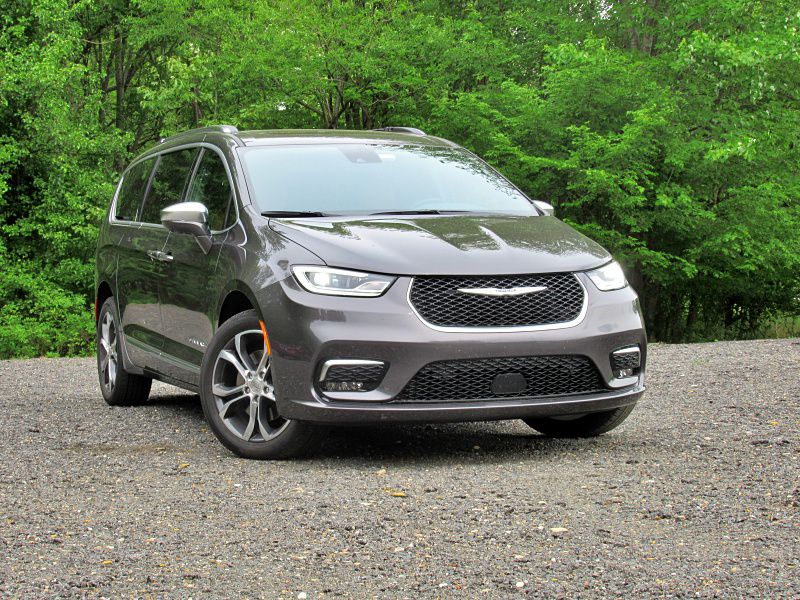
Photo by Brady Holt
Interior Design
The Pacifica’s cabin wowed us with its blend of luxury and functionality back in 2017, and it remains impressive this year. That’s especially with the big new 10.1-inch infotainment screen Chrysler introduced for 2021, which is standard equipment on all trim levels. Still, we’re even more impressed with the redesigned Sienna.
Toyota used straighter lines than Chrysler, which won’t be to everyone’s taste. But we love the way a “floating” center console creates a huge open storage area below the gear selector and cupholders. The Pacifica’s conventional console bin can’t compare. Toyota sealed the deal with a couple of other small victories: Both vans have nicely finished, upscale-feeling interiors, but we felt the false-wood trim on the Sienna looked more contemporary than the Pacifica’s. And while both vans have user-friendly control layouts and well-executed infotainment systems, we preferred the Toyota’s controls because Chrysler sends you into touchscreen menus to use more functions.
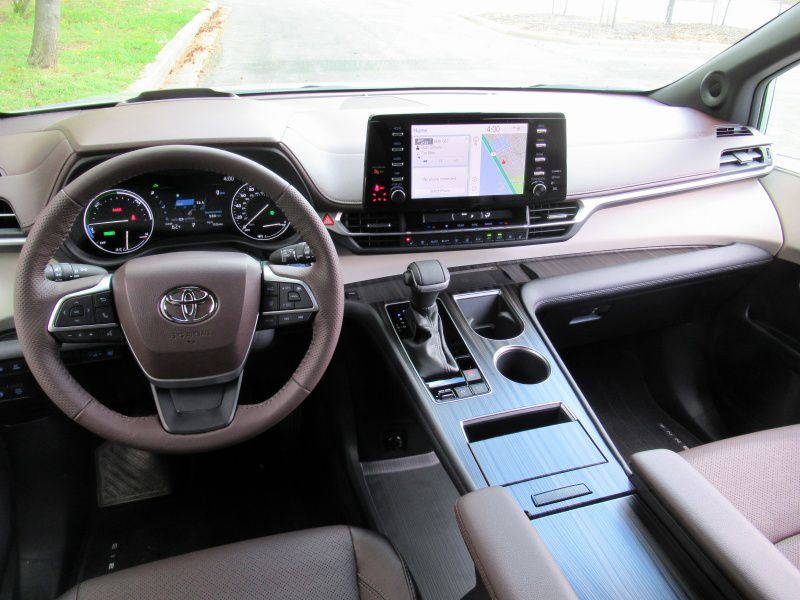
Photo by Brady Holt
Passenger Accommodations
Both the Pacifica and Sienna can seat either seven or eight passengers, depending on whether you install an available jumpseat between the vans’ second-row captain’s chairs. Like most minivans, these two models have enough room for adults to fit in all three rows — in more comfort than all but the most massive of full-size SUVs. But the Sienna has a winning trick up its sleeve.
The Pacifica is configured for cargo dominance (we’ll talk more about that on the next page), but that frees up the Sienna to win for second-row comfort. Most Pacifica models have fixed-position second-row seats without fore-aft adjustability, and even our top-of-the-line Pinnacle test vehicle had limited fore-aft range. By contrast, you can move the Sienna’s aptly named Super Long Slide second-row seats back and forth by 25 inches. That means when no one is using the third-row seat, the second row can enjoy limo-like accommodations. We also appreciated the Sienna’s front-seat center console design, which has padded armrests flanking each side of the console bin. Unlike a single wide armrest, there’s no question about how the driver and front passenger should divide their elbow room.
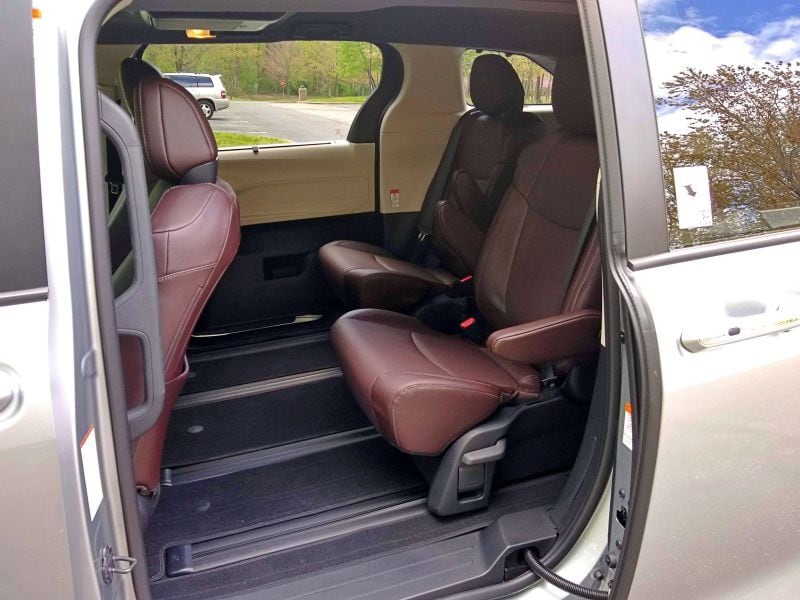
Photo by Brady Holt
Cargo Management
We gave you a preview of this outcome, but we didn’t prepare you for how thoroughly the Pacifica thumps the Sienna’s cargo capacity. The Sienna is hardly cramped, with a respectable 33.5 cubic feet of space behind the third-row seat, 75.2 cubic feet behind the second row, and 101 cubic feet in total. But while the Pacifica slightly trails it with 32.3 cubic feet behind the third row, it gains ground with 87.5 cubic feet behind the second row and a mighty 140.5 cubic feet behind the front seats.
Here’s what happened: Toyota focused on comfort and convenience over maximum volume, so it no longer lets you remove the second-row seats from the van; they’re always inside, robbing some potential cargo room. They quickly slide up to hug against the front seats, a simpler maneuver than uninstalling them and finding a place to store them. But if you’re hoping to bring home a new couch, you’ll have better luck in the Chrysler. What’s more, most Pacificas (though not the Pinnacle or the Pacifica Hybrid) have “Stow ’n Go” second-row seats that fold into bins in the floor — no removing necessary.
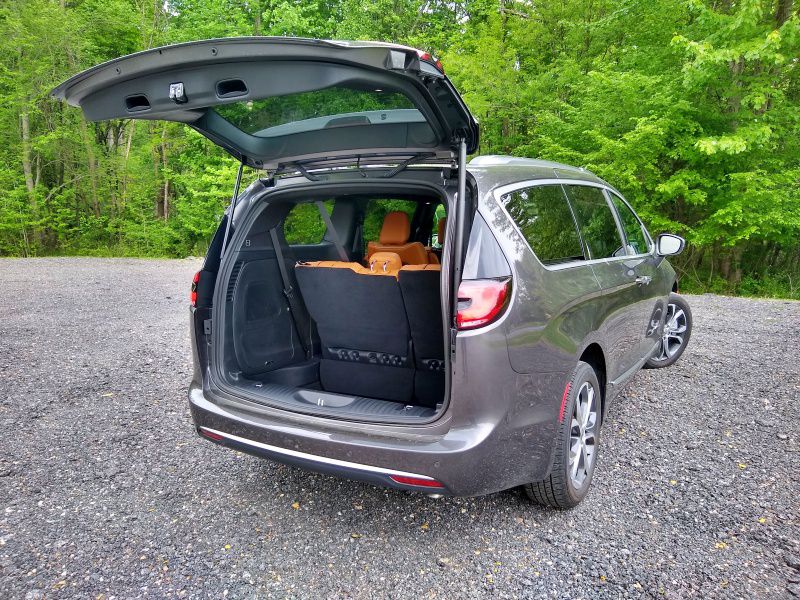
Photo by Brady Holt
Driving Experience
A smooth 287-horsepower V6 engine gives the Pacifica an effortless serenity to its driving experience — especially in contrast with the Sienna, whose hybrid powertrain maxes out at 245 horsepower and includes a coarser-sounding four-cylinder engine. The Toyota isn’t slow, to be clear, and each van is powerful enough to pull a trailer weighing up to around 3,500 pounds. But the Pacifica makes things look easy — providing a more high-end flavor — while the Sienna has to work harder to get moving. You can also get a Pacifica Hybrid with a V6 engine; it falls between the Sienna and the gas Pacifica for smoothness and power.
Both vans have agreeably smooth rides and composed handling, and they’re the only two minivans on the market with available all-wheel drive. The Pacifica felt heavier to us, even though it’s not, but its turning radius is a foot wider than the Sienna’s. The Toyota also seemed to shudder more when it hit a bump. Overall, while neither has problems as a family-ready ride, the Pacifica feels more expensive than the Sienna.

Photo by Brady Holt
Fuel Economy
Since every Sienna is a hybrid, every Sienna gets phenomenal gas mileage. The EPA estimates 36 mpg in the city and 36 mpg on the highway with front-wheel drive, while all-wheel drive models lose just 1 mpg in the city. Our AWD test vehicle averaged an amazing 39 mpg in mixed driving. The Sienna can cruise or even accelerate slowly using only electric power, or the electric motors can supply some extra gas-free juice to the drive — reducing the amount of gasoline burned.
The standard Pacifica’s gas mileage is competitive with other powerful V6 minivans: 19 mpg in the city and 28 mpg on the highway with front-wheel drive, and 17 mpg in the city and 25 mpg on the highway with AWD. That matches our experience; our AWD Pacifica averaged 21 mpg. But you can also get the Pacifica as a plug-in hybrid, which you charge up using electricity from the grid. Doing so lets you travel up to 32 miles on an electric charge, burning no gasoline at all during that time. The EPA estimates you’ll average 30 mpg once the range is used up. Still, with its always-included, always-efficient hybrid setup, the Sienna wins this category.
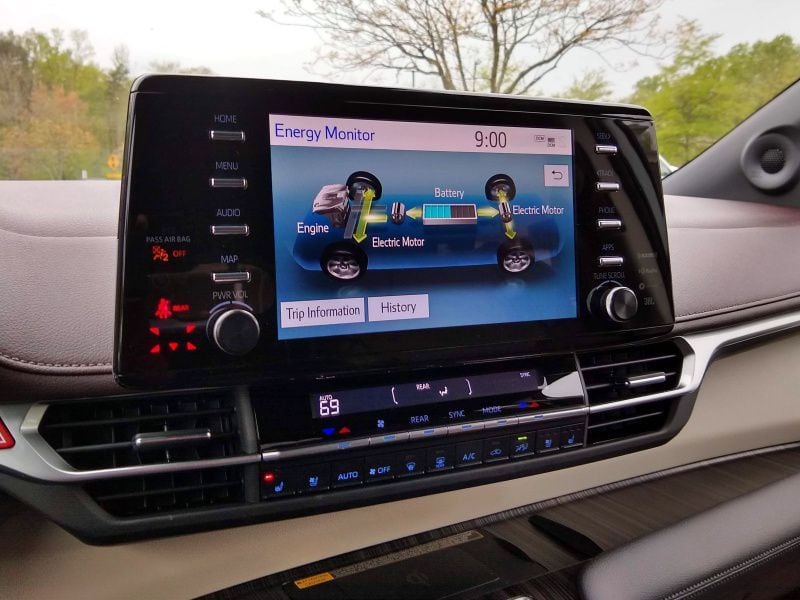
Photo by Brady Holt
Safety
Both the Sienna and Pacifica come packed with advanced safety features and score well in most crash tests. However, the Chrysler comes out a bit ahead.
While both vans earned top ratings in all Insurance Institute for Highway Safety crash tests, the Sienna earned four out of five stars for frontal-impact protection from the National Highway Traffic Safety Administration — including a low three-star score for the driver in particular. Both vans did well enough to earn an overall five-star NHTSA score, but the Pacifica also earned five stars in each individual NHTSA crash test. Both vans come standard with adaptive cruise control, automatic emergency braking, lane-keeping steering assistance, and blind-spot monitoring. Still, when it comes to crash protection, the Pacifica does a little better.
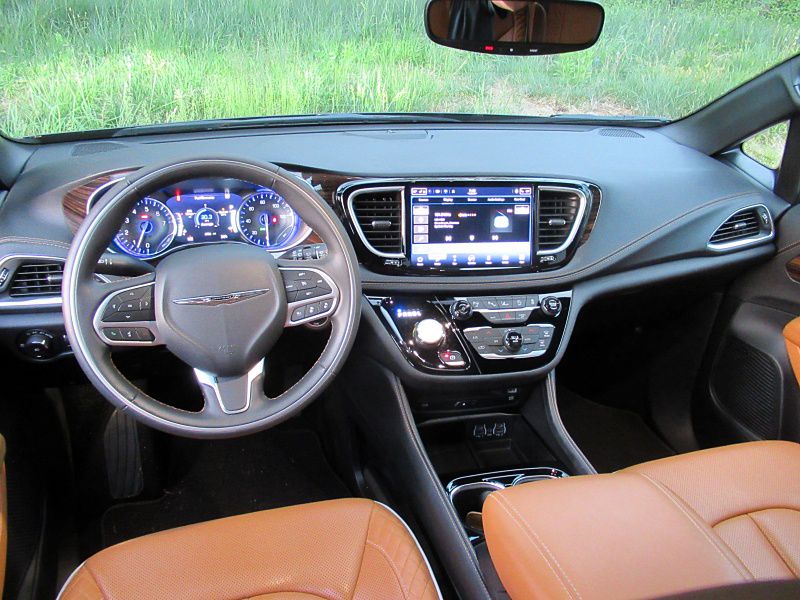
Photo by Brady Holt
Final Thoughts
We came away impressed with both the Pacifica and the Sienna. Chrysler has made an elegant, refined van that’s packed with high-end and family-friendly qualities alike. From its quiet ride to its available fold-into-the-floor seats to its in-car camera, this van was carefully thought through to deliver a convenient yet high-grade experience for your family — all while keeping prices in check.
Still, we think Toyota covered even more of the right bases for a minivan. The Sienna prioritizes extra-economical gas mileage rather than maximum power or quietness, and it maximizes comfort and simplicity over the highest possible cargo capacity. The Sienna’s NHTSA crash-test score gives us pause, and some buyers will understandably prefer the Pacifica’s more luxurious flavor, Stow ’n Go folding seats, in-car camera, or, with the plug-in Pacifica Hybrid, potential for all-electric driving. But while you can choose among several quiet, V6-powered minivans, there’s only one that’s like the Sienna. It is both strongly appealing and unique, and it’s our winner.
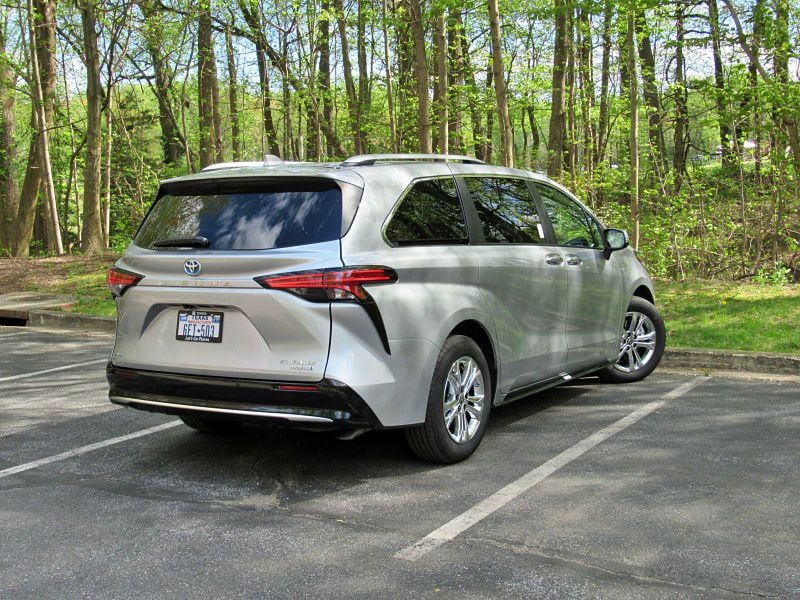
Photo by Brady Holt